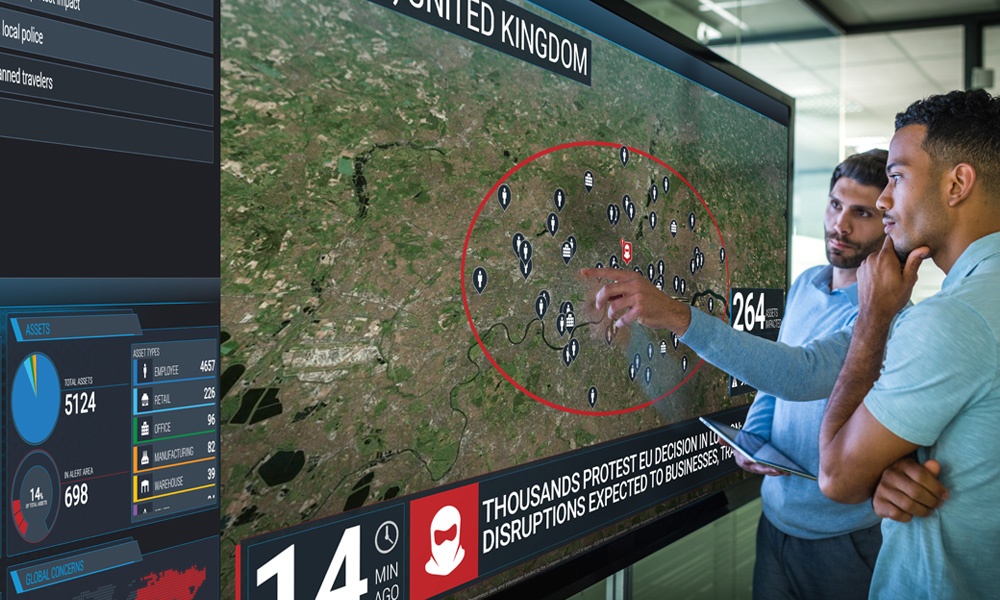While most businesses have an emergency preparedness plan in place, organizations should regularly review it to ensure that they’re ready to protect themselves against the growing list of major incidents and critical events impacting businesses. According to the 2020-21 Major Incident Management report, an emergency preparedness plan isn’t enough to combat the growing threat landscape. To combat the rise in critical events, organizations must maximize operational resilience.
Operational resilience can best be described as a set of initiatives and techniques an organization adopts to provide business continuity in the face of disruption. The more operational resilience an organization has, the more likely a business is to face fewer disruptions, and be fully prepared for those that they will. This results in shorter response and resolution times, as well as a more mature enterprise. Creating and maintaining a mature enterprise is no easy task, and requires a multi-pronged approach that begins with understanding and evaluating operational resilience.
download our Evolution of Mass Notification into Critical Event Management whitepaper
The Value of Operational Resilience: Protecting Employees and Essential Business Functions
 Employee Safety
Employee Safety
Every organization has a duty of care to its employees. It’s not only a legal requirement, but a moral one, and keeping employees safe should be at the top of every priority list. As such, organizations must have the operational resilience needed to ensure employee safety – especially when critical events can put lives at risk. Take for example earthquakes, if you have a business in an earthquake-prone area you likely know all too well the danger that they bring, which can happen unexpectedly at all times of the day. When an earthquake happens, organizations need to ensure their employees are protected from falling objects, aftershocks, and can quickly communicate to the business if there’s damage or additional danger.
Protecting Essential Business Functions
While operational resilience can help ensure the safety of employees in and outside the workplace, operational resilience is also needed to help protect business assets, processes, and data from disruption – and disruption can cost millions of dollars. Consider the infamous Prime Day outage in 2018, a 63-minute outage cost the company a total of $72 million, not to mention the public embarrassment that came along.
Despite the importance of operational resilience to employees and assets, it can be difficult for organizations to pinpoint where they need to improve their resilience strategy. To identify problem areas, businesses should regularly measure their organizational resiliency, and work towards an enterprise resiliency certification.
How to Measure Organizational Resiliency for Critical Events
Organizational resilience is the ability to identify, prepare for, and resolve disruptions and risks that jeopardize an organization with the least possible impact on life, safety, reputation, and operations. Through measuring organizational resilience, business continuity leaders can best optimize their response strategies to critical events, such as:

Businesses can examine their organizational resilience for critical events by evaluating and identifying their ability to:
-
-
- Keep people safe
- Maintain business continuity and operational uptime
- Optimize supply chain and routes
- Ensure efficiency and safety of smart buildings and the Internet of Things (iot)
- Safeguard reputation through resilient and responsive IT systems
-
While these evaluations can be done internally, organizations can better examine their organizational resilience to critical events through an organizational and enterprise resilience certification.
The Everbridge Critical Event Management (CEM) Certification™ Program provides a unique standards framework for assessing an organization’s overall enterprise resilience, leveraging 20 years of professional services engagements across tens of thousands of projects in over 150 countries and facilitating tens of billions of critical interactions.
Take the Maturity Assessment Now!
Once the areas of improvement have been identified, businesses can take the first step in improving organizational resilience with critical event management.
The First Step to Effective Critical Event Management: Mass Notification Systems
When facing critical events, speed and responsiveness are key. A mass notification system allows organizations to easily send emergency communications with ease, reliability, and consistency – all of which are vital in times of crisis. For example, Everbridge Mass Notification with Incident Communications prioritizes ease of use while maximizing speed and reliability, allowing organizations and government bodies to reach their audience before, during, and after a critical event.
While mass notification systems are often a first-choice for enterprises looking to improve their critical event management strategy, a stand-alone emergency solution is no longer enough to combat the growing threat landscape. In fact, many believe a critical event management (CEM) system is needed to create long-term operational resilience.

What is a Critical Event Management System?
Critical event management (CEM) systems use technology to automate manual processes and digitally transform critical event management. For example, Everbridge’s CEM solution allows organizations to speed up responses to critical events and improve outcomes by mitigating or eliminating the impact of a threat. Critical event management systems amplify ad hoc data to provide richer intelligence on threats while providing insight into the locations of people and company assets, generating rapid and comprehensive incident assessment and remediation.
The Benefits of a Critical Event Management System
A CEM system can help organizations ensure operational resilience, business continuity, emergency management and disaster recovery. For example, The Total Economic Impact™ of The Everbridge Critical Event Management Platform study revealed that Everbridge’s platform helped provide safer workplaces, reductions in property damage, decreases in IT downtime, increased productivity, and other benefits to those who used it. However, to better understand how a critical event management system can help organizations ensure resiliency, it’s best to examine how CEM can benefit the five main facets of an organization during a critical event.
-
-
-
-
- People – In 2019, 820 natural disasters causing insured losses were recorded– a number that has tripled in the last 30 years. With a CEM system, organizations can detect events like hurricanes, triggering an automated response like sending storm preparation instructions to those in its path.
- Buildings – During natural disasters like hurricanes or earthquakes, commercial buildings can be prone to damage. CEM systems help notify organizations of threats in or near a building before it happens, illustrating possible risks to operations and infrastructure, and allowing for the proactive protection of facilities and assets.
- Digital Operations and Infrastructure –The COVID-19 pandemic made it difficult to keep business operations running, resulting in 200,000 additional business closures in 2020. With the digital transformation capabilities of CEM, businesses can set themselves up for scalability during a crisis – allowing organizations to act quickly and effectively in the face of disruption.
- Supply Chains – With an overarching CEM solution, the proper management and optimization of supply chains and routes can be accomplished. CEM introduces automation, allowing organizations to identify risks to suppliers and stops with ease, speed, and accuracy.
- IT Department and Cybersecurity – Cyberattacks are on the rise, with over a quarter of those targeted experiencing five attacks or more. Implementing a CEM system can help streamline processes when IT incidents occur, expediting the time it takes to validate system failures while identifying those who can help provide actionable solutions.
-
-
-
BECOME Best in Enterprise Resilience™ CERTIFIED
Creating a Mature Enterprise: Operational Resilience and Critical Event Management
Ensuring the operational resilience of any organization is a difficult task, one that requires constant commitment, monitoring, and evolution. However, securing operational resiliency can be accomplished effectively through the appropriate assessments, planning, and technology.
To learn more about creating an operationally resilient enterprise, download our Evolution of Mass Notification into Critical Event Management whitepaper. Inside, uncover how to create and maintain a mature enterprise through a holistic approach to critical event management, and glean insight into the technologies combating today’s complex threat landscape.
download our Evolution of Mass Notification into Critical Event Management whitepaper
